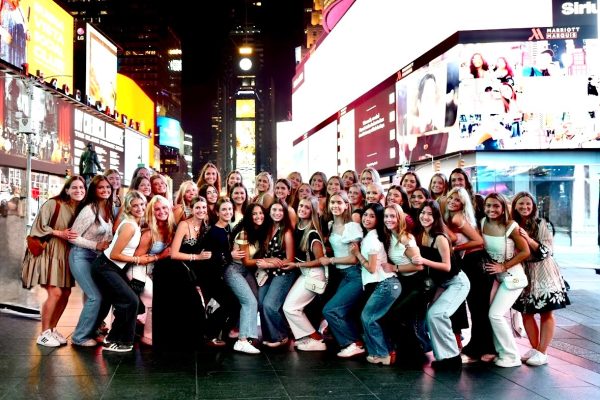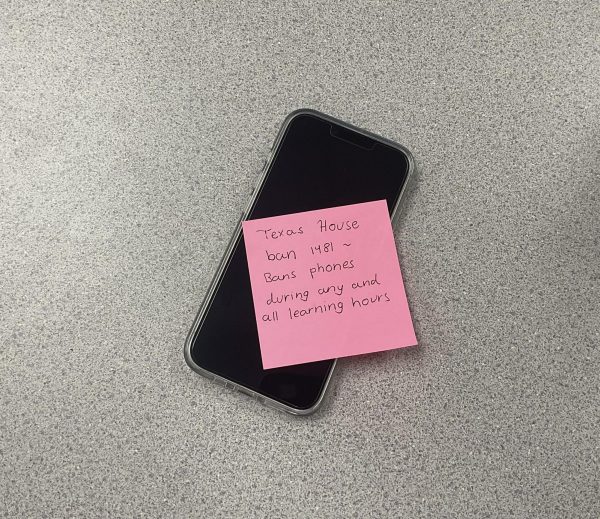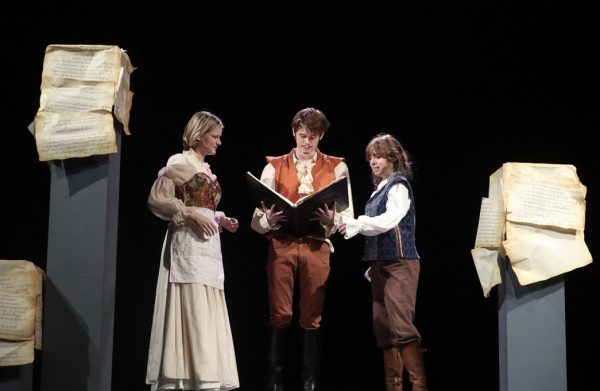New Spanish teacher discusses teaching career
He holds the small, orange, jagged rock in the palm of his hand. It isn’t flecked with gold or some precious metal; it’s something you could find in any everyday place. Most people wouldn’t think much of it, but for Spanish teacher Héctor Velázquez, it has a special meaning. It reminds him daily of something very significant — what he does as a teacher makes a difference. This rock has traveled with him to various schools across several continents for the past 19 years.
Velázquez grew up in Puerto Rico, and he taught math there for two years. He then moved to Austin ISD where he taught both math and Spanish. Afterwards, he took a year to teach English as a second language in Spain, then taught at Elgin High School for four years before taking a year off. Now he’s teaching here at Westlake. Because of how long he’s been teaching, Velázquez has gained a lot of experience.
“I realized that students are the same everywhere, with just a few little details that have to do with their upbringing or life situation,” Velázquez said. “If you treat them well, you’re going to have a fun time — I think they adore you and they’re nice to you. If you’re a bad teacher, then kids won’t like you. What I think I figured out [from] teaching in three different countries in different schools is that students are the same, at least in the countries I’ve [taught in].”
Velázquez realized he wanted to be a teacher when he was still a high school student.
“When I was in high school, I was not too good with Spanish as a first language — which is funny, since I’m teaching Spanish now — nor history,” Velázquez said. “I was very good with science and math. So I would meet with a group of friends, and the ones that were good at Spanish and social studies would help me, and I’d help them with math. And I found that they would get it, and that it was easy for me to explain things. So I thought this is something I could pursue. When I was in college, I started with chemistry, and then I changed to math, and then I got into education.”
There are a lot of frustrations in teaching, including paperwork and the transition to the electronic age of teaching. Velázquez believes instructing and helping the students makes it all worth it, though.
“For me, [my favorite part about teaching] is the moment when you’re explaining something to a student and the student goes, ‘Oh! I get it!’” Velázquez said. “That moment, for me, is the reason why I’m here. To help the students understand something. So when they get to the point where they finally get a concept, that is the highlight of my day.”
With as much work experience as Velázquez has, he has learned a lot about how to manage a classroom.
“I have seen many different activities throughout these 19 years that I can try to implement that are out of the norm,” Velázquez said. “When I was teaching geometry, I was teaching the unit on logic. I showed the video of Legally Blonde where she solves the first case and she’s still an intern, and the students asked what that had to do with geometry. So we went and we talked about the case: how did she solve it, what were the facts that she was showing, what is the evidence. Then we made the connection to geometry. And how I got them to understand it was through a fun clip.”
Through everything, Velázquez has kept this rock with him. For him, this rock is more than just a normally everyday rock.
“I always think about this one student,” Velázquez said. “Many years ago, I want to say probably 1998, I had an eighth grader, and he was the student that was normally in the office because he was normally in trouble. He would skip classes, but he never skipped mine. One day he was walking in, and he was obviously mad [because] something had happened in the previous period. I was in the portables, so I told him that my door keeps closing and asked him to go find a rock to prop the door open with. He went and came back and was totally different because he was thinking about the rock. To this day I still have this rock. I found him on Facebook a couple months ago and I took a picture of the rock and something else we made for class and sent it to him and told him how much he changed. What I learned from that experience was that we all have bad days. As a teacher I have bad days. When a student has a bad day, it’s not my job to get angry. I can do something to try and fix it, and what I did was put something in his head to make sure that he forgot.”





